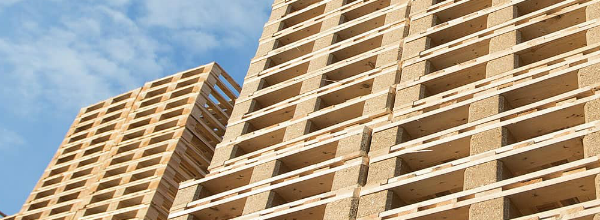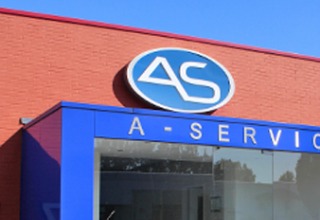UNDERSTANDING PALLETS of crucial importance with automatic loading and unloading systems
Having read this article, you will understand how pallets and their loads have direct technical consequences affecting the automatic loading and unloading system to be chosen.
At Asbreuk Service, we specialise in automatic loading and unloading systems for goods vehicles. In 9 out of 10 cases, this involves pallets.
The pallets used and the way they are palletised are of crucial importance to the process, operation and costs of an automatic loading and unloading system.
Quality of the pallets
Pallets are available in many different shapes and sizes. As well as Europallets, there are Düsseldorf, shed and industrial pallets. Pallets are generally used multiple times, although they are sometimes used only once. Export pallets must be as cheap as possible. Cheap wood types are used for these pallets, and their construction is often also substandard. Pallets designed for reuse are sturdy, but deteriorate with repeated use.
The quality of the pallets determines the design of the system. Assuming a roller system, the following applies: The worse the quality, the shorter the distance between the rollers. Chain conveyors require three chains to support lower-quality pallets, rather than two.
In addition, poor-quality pallets must be supported during transfer from one transport system to another. They cannot support their loads alone, and they can collapse or break easily.
To avoid these additional costs, we can integrate an automated pallet inspection point during the preliminary stages of the automation process. This is a system that assesses pallets in all possible respects: this includes the number of slats, the number of blocks, the quality and the load overhang on all four sides. If a pallet does not comply with the stated quality, it is removed from the line and presented to operators. This guarantees pallet quality, which means the rest of the system can be implemented more cheaply. Of course, it is best to tackle the problem at the source and to ensure that the right pallets are used and are loaded correctly, but this isn’t always possible in practice.
Quality of the pallet load
When considering the load on a pallet, we assess its static and dynamic stability. More stable loads allow the pallet transport system to work more efficiently. Unstable pallets require a system with a soft start and soft stop, i.e. systems with frequency-controlled or servo-controlled drive trains. This allows flexible transport speeds, and the acceleration and deceleration of the system. If the load is stable, then such regulation systems are not immediately necessary.
Use of stretch film
Stretch film is often used to make pallet loads more stable. We see that stretch film is often a favoured cost-saving measure in practice, but these savings can lead to increased costs elsewhere in the system. After all, unstable pallets require higher specifications in terms of the control of the drive train. In addition, loose film can inadvertently activate sensors, which can disrupt the process.
Overhang
There are several palletisation processes, each of which results in a greater or lesser degree of overhang. Overhang arises when the load protrudes beyond the edges of the pallet. This may occur if the load is broader at the top, or is not placed straight. Truck trailers are limited to maximum dimensions, and the overhang tolerance is often no more than 3 cm. Excessive overhang can lead to damage to the load, the system and the truck trailer. When loading the truck trailer manually, for example with a fork-lift truck, the driver corrects this overhang. With automated systems, the system must perform this itself. This can be done using automatic inspection, or by installing load pushers at the end of the automatic loading system.
Do you have any questions or remarks, or would you like to know more about the best system for the pallets in use at your company? Then please get in touch. We would be happy to discuss this further with you.
e-mail: maas@a-service.nl
telephone: +31 (0)541-521206.


